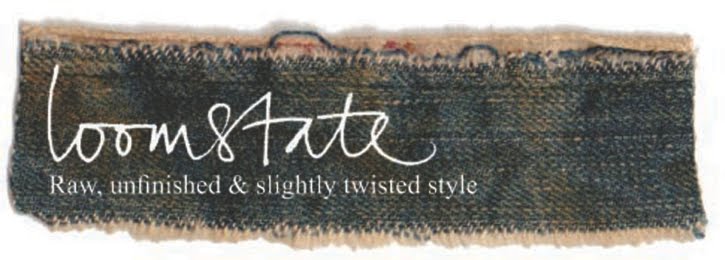
The inspiration came when Cone Mills decided to put back into service an old G Series loom that was on display in their reception (I photographed the loom during my visit and will try and locate the photo soon). The loom still had a bolt of fabric, which it was weaving just before the venerable machine's retirement. Levi's staff were overjoyed and talked of making some jeans from the deadstock fabric - before realising it was a left-hand twill. Levi's 501 is famously right-hand twill. How could they turn from left to right? Easy! Make these mirror image jeans.
There are, I've been told, around a dozen pairs using the original fabric. I was lucky enough to be in the office around the time they came up with the idea. The kind, crazy people offered me a pair... and unlike so many people in the planet followed up on their promise. So these are one of a dozen or so pairs using the deadstock fabric.
It was strange for me to open up a pack with these jeans, as they are so strongly evocative of so many new pairs I've owned. They're a very authentic cut, as the pattern was taken from a deadstock pair of originals - when taking a pattern from worn, washed jeans, more guestimates are obviously involved. There will be a limited edition of 501 mirror jeans, using fabric which replicates the original run. And the other good news is there will be a regular reissue of the right hand twill version, at a lower price. These are a very distinctive shape, high waisted, carrot shape - a cut which I reckon is very popular right now. Makes a great change from the usual 50s and 60s shapes, and it will be fascinating to see how all versions, using the deadstock and the repro fabric, look as they wear in.














